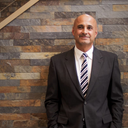Posted underEar Surgery q&a
Is there a way to change the ear angle only slightly? If so, how invasive and costly might it be? (photo)
My ears don't stick out hugely like some people I have seen who had their ears pinned back but the things is I am going bald and when I shave my head to become more comfortable with hair loss then I am self conscious of my ears as they become more prominent (I cant have a Hair transplant). Is there a way to reliably move my ears in very slightly (a few mm's only)? I don't want an unnatural pinned back look especially as they will be on display when bald.
Answers (4)
From board-certified doctors and trusted medical professionals
Dr. James M. Ridgway, MD, FACS

Dr. James M. Ridgway, MD, FACS
Board Certified Facial Plastic Surgeon
Answer
Dr. Sepehr Egrari, MD, FACS

Dr. Sepehr Egrari, MD, FACS
Board Certified Plastic Surgeon
Answer
Dr. William Portuese, MD
Dr. William Portuese, MD
Board Certified Facial Plastic Surgeon
Answer
Dr. Tariq Ahmad, MBBChir, FRCS(Plast)
Dr. Tariq Ahmad, MBBChir, FRCS(Plast)
Specialist Registered Plastic Surgeon
Answer
More Ear Surgery Questions
See all Ear Surgery Q&AWE SEND PRETTY
EMAILS
What’s trending? Who’s turning heads? Which TikTok myths need busting? We’ve got you. No fluff, no gatekeeping—just real talk. Get our free, unfiltered newsletter.